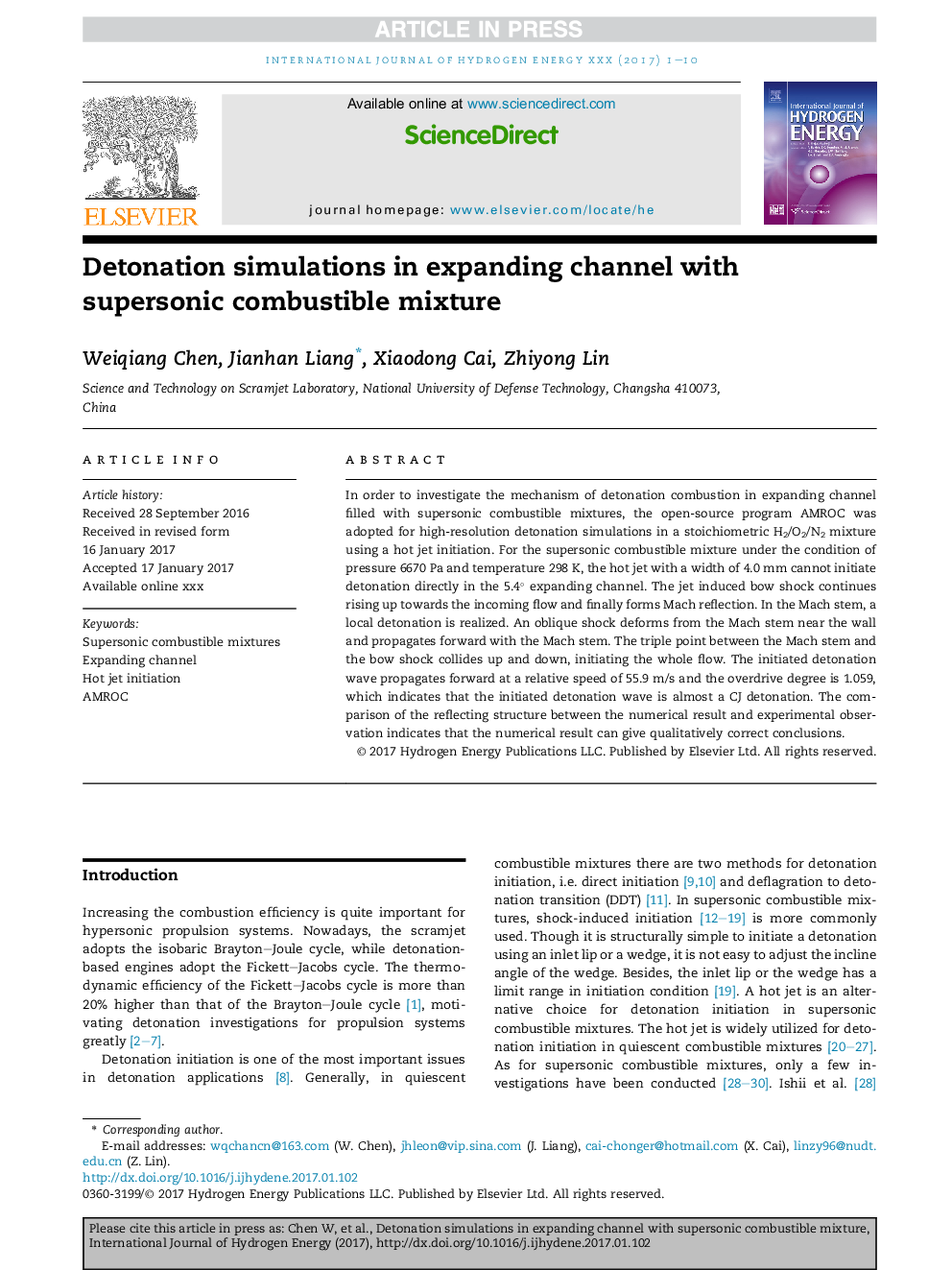| Article ID | Journal | Published Year | Pages | File Type |
|---|---|---|---|---|
| 5146845 | International Journal of Hydrogen Energy | 2017 | 10 Pages |
Abstract
In order to investigate the mechanism of detonation combustion in expanding channel filled with supersonic combustible mixtures, the open-source program AMROC was adopted for high-resolution detonation simulations in a stoichiometric H2/O2/N2 mixture using a hot jet initiation. For the supersonic combustible mixture under the condition of pressure 6670 Pa and temperature 298 K, the hot jet with a width of 4.0 mm cannot initiate detonation directly in the 5.4° expanding channel. The jet induced bow shock continues rising up towards the incoming flow and finally forms Mach reflection. In the Mach stem, a local detonation is realized. An oblique shock deforms from the Mach stem near the wall and propagates forward with the Mach stem. The triple point between the Mach stem and the bow shock collides up and down, initiating the whole flow. The initiated detonation wave propagates forward at a relative speed of 55.9 m/s and the overdrive degree is 1.059, which indicates that the initiated detonation wave is almost a CJ detonation. The comparison of the reflecting structure between the numerical result and experimental observation indicates that the numerical result can give qualitatively correct conclusions.
Related Topics
Physical Sciences and Engineering
Chemistry
Electrochemistry
Authors
Weiqiang Chen, Jianhan Liang, Xiaodong Cai, Zhiyong Lin,
